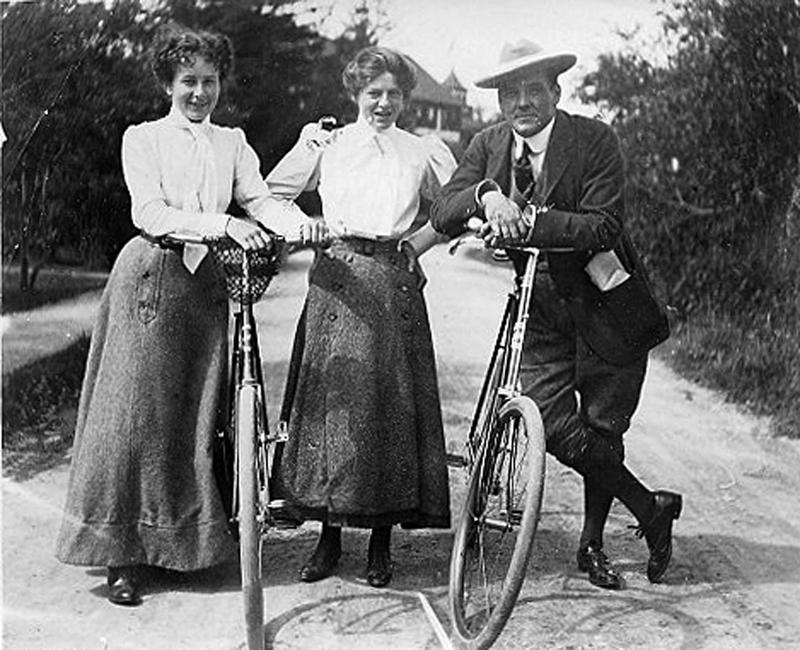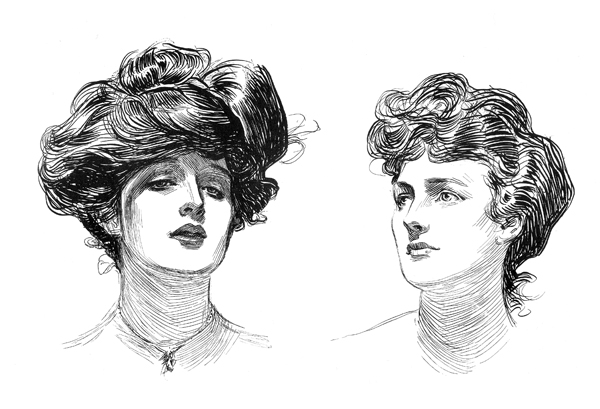Made in Marion: From the Gibson Girl to presidential portraits
The creator of an American icon. Two presidents of the United States. A beautiful, successful artist who lived with her 35 dogs.
As the nineteenth century shifted into the twentieth, Marion was the summer residence of choice for nationally-known (and even internationally-known) artists and other figures, who chose to visit Marion to escape the heat and stench of Boston, New York City and Washington, D.C.
At the center of it all was poet, editor and wealthy democrat Richard Watson Gilder. Gilder and wife Helena de Kay, a well-known painter and the founder of the Society of American Artists and Art Students League, lived in Marion during the summer.
Gilder and de Kay lived in the Old Stone Studio (then known as the Gilder Studio), at 46 Spring Street. The studio was a central point for the milieu of artists and notable people who resided in Marion during the summer—almost all of whom were persuaded to visit Marion by Gilder himself.
Marion, explained artist Nancy Dyer Mitton in her book, "A Romantic Art Colony: Marion, MA," was "a not-too-remote escape from the distasteful life of the city. The artists were connected and could enjoy each other's company."
Sculptor Augustus Saint-Gaudens, who also created the Robert Gould Shaw Memorial in Boston, sculpted First Lady Frances Folsom Cleveland in Old Stone Studio. Cleveland and her husband, President Grover Cleveland, spent several summers in Marion in-between Cleveland's two terms as president.
Fellow artists Cecil Clark Davis and Charles Dana Gibson also visited the studio, and spent time in Marion.
Gibson was the inventor of the "Gibson Girl," a representation of the "beautiful and independent" American woman of the time period. He rented a summer home in Marion alongside his wife Irene, the model of the "Gibson Girl."
The Gibson Girl was a tall, athletic and independent woman, often in the workplace, and always stylish and youthful.
She was, said Mitton, the international image of the modern American woman at the time.
One of Gibson's fellow Marion residents, Cecil Clark Davis, was another "Gibson Girl" inspiration. Clark Davis stayed many summers at the former Sippican Hotel, at the corner of South and Water Street, with her family, where she stayed alongside President Franklin Delano Roosevelt. She was an eminent portrait painter, having painted Alexander Graham Bell when she was only 20.
According to Judith Rosbe's book "Marion in the Golden Age," it was at the dance casino across the street from the Sippican Hotel that Richard Harding Davis, a noted war journalist, noticed Cecil Clark for the first time.
Clark and Davis married at St. Gabriel's Chapel in 1899. The "Boston Sunday Journal" reported on the wedding. Actress Ethel Barrymore was maid of honor, and Gibson was a groomsman. The couple lived near the water in Marion until their divorce in 1913. After the divorce, Clark Davis lived in town with her 35 dogs for company.
She also American aviation pioneer, Charles Lindbergh. The painting hung in Lillard Hall at Tabor Academy until the 1930s, when Adolf Hitler gave Lindbergh an award for his aviation skills.
Tabor's then-headmaster, Captain Lillard, threatened to turn the painting against the wall, furious at Lindbergh for accepting the award. The threat angered Clark Davis, who took her painting back and hid it in her studio on Vine Street for years—it was only rediscovered after her death.
The society of artists faded in the 1930s. Several of the artists had moved or passed away. President Cleveland stopped visiting Marion after he was elected to his second term in office. The town, already fading from the social register, was hit hard by the Great Depression, and was never quite able to regain its former national glory.















